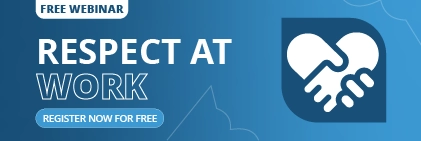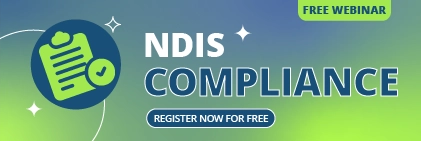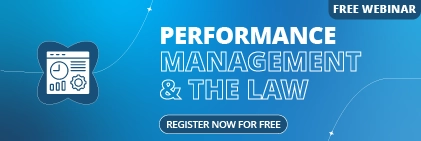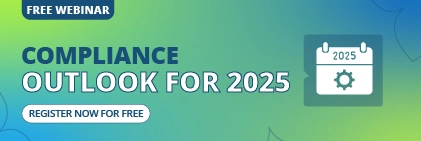As an Australian business owner, you’re dealing with hundred’s of different modern awards, the Fair Work Act requirements, and state-specific variations that would challenge even the most seasoned HR professional.
Manual leave and attendance management isn’t just inefficient anymore – it’s downright dangerous for your business.
But here’s the good news: Australian businesses that invest in proper HR software are achieving remarkable results.
In this comprehensive guide, we’ll walk you through everything you need to know about your legal obligations, show you the real costs of getting it wrong, and explain exactly how modern HR technology can transform your business.
Understanding Australia’s Leave and Attendance Framework
Fair Work Act 2009 and National Employment Standards
Let’s start with the basics – the Fair Work Act 2009 sets out your minimum obligations as an Australian employer, and trust me, there’s a lot more to it than you might think.
Under the National Employment Standards, you’re required to provide every eligible employee with four weeks of annual leave (five weeks if they’re shift workers), ten days of personal and carer’s leave, twelve months of parental leave, ten days of family and domestic violence leave, and two days of compassionate leave.
But that’s just the beginning.
The rules have been changing rapidly, and if you’re not keeping up, you’re falling behind. In August 2024, new casual employment definitions came into effect, completely reshaping how you classify and manage casual workers.
The “right to disconnect” laws also kicked in, meaning you need to be careful about when and how you contact employees outside work hours.
Most significantly, from January 2025, criminal penalties apply to intentional wage underpayments – this isn’t just about civil penalties anymore, we’re talking potential jail time for serious breaches.
Award Complexity and Enterprise Agreements
Australia has hundreds of modern awards, each with its own specific requirements that often go well beyond the National Employment Standards.
Your manufacturing business might need to comply with both the Manufacturing Award and the Clerks Award for different employee groups. Each award has different leave loading rates, overtime calculations, and penalty provisions that you absolutely must get right.
Enterprise agreements add another layer of complexity. If you’ve negotiated an enterprise agreement with your employees, it must pass the Better Off Overall Test, meaning every employee must be genuinely better off than they would be under the relevant award.
The Fair Work Commission scrutinises these agreements carefully and getting it wrong means starting the entire process again.
The government has acknowledged that this complexity is a real problem for businesses like yours. They’ve allocated $10 million specifically for regulatory technology solutions because they recognise that the current system is nearly impossible to navigate manually.
As a result, this tells you clearly something important – even the government knows you need technological help to comply properly.
State Variations and Additional Requirements
Just when you think you’ve got federal requirements sorted, each state throws in its own variations.
Long service leave is the perfect example – in Victoria, employees qualify after ten years, but in South Australia, it’s just seven years. The calculation methods vary too, with some states using a pro-rata system whilst others have different formulas entirely.
If you operate in industries like construction, coal mining, cleaning, or security, you might also need to deal with portable long service leave schemes. These schemes allow workers to take their entitlements between employers, but they require you to make regular contributions and maintain detailed records across multiple systems.
Single Touch Payroll reporting to the ATO adds yet another compliance layer. You must report leave components in real-time, and any discrepancies trigger automated reviews.
For high-income employees earning above $183,100 (the 2025 threshold), you have award-free flexibility, but you still need to meet National Employment Standards minimums.
Why Business Owners Struggle with Compliance Using Manual Systems
You’d be surprised how easily costly mistakes happen with manual systems.
Calculation errors are incredibly common – working out pro-rata leave entitlements manually, applying the wrong leave loading rates (17.5% where required), or miscalculating overtime and penalty rates.
These seem like small errors, but they compound quickly across multiple employees and pay periods.
Apart from this, inadequate timesheets, missing leave documentation, and non-compliant payslips create a situation where you cannot prove you’ve paid employees correctly.
Under Australian law, if you can’t prove compliance system, you’re assumed to be non-compliant – this reverse burden of proof makes proper documentation absolutely essential.
Most importantly, classifying employees at the wrong level, missing penalty rates for unusual hours, or failing to apply correct overtime calculations can result in significant underpayments. When you multiply these errors across your entire workforce over several years, the financial exposure becomes enormous.
The True Cost of Manual Processes
Manual systems don’t just create a compliance risk management system – they’re incredibly expensive to operate.
You need significantly more HR and payroll staff to handle the administrative burden, and these staff members spend most of their time on routine calculations rather than strategic activities that grow your business.
When mistakes happen (and they will), you need to dedicate staff time to investigating discrepancies, calculating back payments, dealing with employee complaints, and managing Fair Work Ombudsman inquiries.
These reactive activities pull resources away from productive work and create stress throughout your organisation.
Soon enough, you’ll find yourself paying for employment lawyers, HR consultants, and specialist advisors to help overcome complex situations that proper systems would have prevented in the first place.
The reverse burden of proof means you often need expert help to demonstrate compliance, even when you believe you’ve done everything correctly.
How HR Software Eliminates Australian Compliance Risks
Automated Fair Work Act Compliance
Modern HR software transforms compliance from a constant worry into an automated process that runs in the background.
The system automatically calculates leave accruals based on exact National Employment Standards requirements.
For example, full-time employees accrue precisely 2.923 hours of annual leave each week, and the software handles this calculation perfectly every single time, including adjustments for part-time employees, casual workers, and those with varying hours.
Comprehensive Leave Management
Quality HR software supports every type of leave required under Australian law, from standard annual leave (including the 17.5% loading where applicable) to the newer family and domestic violence leave entitlements.
Personal and carer’s leave is tracked with unlimited carryover provisions, whilst long service leave calculations handle the complex state-specific variations automatically.
Pro-rata calculations happen automatically without any manual intervention. Whether you’re dealing with part-time employees, casual workers, or staff who’ve changed their hours during the year, the software calculates exact entitlements based on their actual work patterns.
This eliminates the calculation errors that frequently occur with manual systems, especially during busy periods when mistakes are most likely.
Bulletproof Record-Keeping and Audit Trails
Seven-year compliant storage is built into quality HR software, with secure, searchable records that exceed Fair Work requirements.
Every transaction, every calculation, and every decision is preserved with complete detail, making compliance demonstrations straightforward during audits or investigations.
Complete transaction histories provide timestamps, user actions, and approval chains for every leave activity. You can see exactly when leave was requested, who approved it, what calculations were applied, and any subsequent changes.
This level of detail protects your business during disputes and demonstrates your commitment to proper process management.
Enterprise Agreement and Custom Rules
Agreement visualisation is a sophisticated feature that converts complex legal documents into clear, actionable decision trees.
Your enterprise agreement might contain hundreds of pages of legal text, but the software translates this into logical rules that guide automatic calculations and ensure consistent application across your workforce.
Better Off Overall Test support includes compliance checking against award minimums. When you’re negotiating or reviewing enterprise agreements, the software can verify that every employee classification genuinely receives better conditions than the relevant award provides.
This analysis would take weeks manually but happens instantly with proper software.
Custom rule configuration allows you to accommodate unique organisational agreements and policies. Perhaps you provide additional leave entitlements, have specific approval processes, or operate under industry-specific arrangements.
Quality HR software adapts to your requirements rather than forcing you to change your business practices.
Proactive Compliance Monitoring
Real-time alerts provide immediate notification when potential compliance violations are detected.
If an employee’s leave balance becomes excessive, if someone hasn’t taken minimum required leave, or if unusual patterns suggest potential issues, you’ll know immediately rather than discovering problems during your next audit.
This proactive approach prevents small issues from becoming major compliance failures.
Regulatory updates happen automatically as legislative changes occur.
You don’t need to monitor Fair Work Commission announcements or worry about missing important updates – the software vendor handles this complexity and ensures your system always reflects current legal requirements.
Why Sentrient is Australia’s Premier Leave and Attendance HR Solution
Sentrient combines advanced AI-powered automation with the kind of local expertise that only comes from years of working exclusively with Australian businesses.
This isn’t software that’s been adapted for Australia – it’s been purpose-built from the ground up to handle the unique complexities of Australian employment law, from the Fair Work Act’s intricate requirements to modern awards that govern different industries.
Sentrient’s automated time and attendance tracking eliminates the manual timesheets that cause so many problems for Australian businesses.
The system intelligently monitors employee working hours, tracks productivity patterns, and prevents absenteeism through accurate reporting and real-time insights.
You’ll know immediately when attendance patterns suggest potential issues, allowing proactive management rather than reactive problem-solving.
Conclusion
You’re operating in an employment law environment that grows more complex every year.
The question you face isn’t whether you need better systems – it’s which solution will best protect and enhance your business operations.
Sentrient’s proven track record tells a compelling story that you need to hear.
Ready to transform your leave and attendance management from a compliance burden into a competitive advantage?
Sentrient offers a free demo that shows exactly how their system works with businesses like yours. You can see the software in action, ask questions specific to your industry and circumstances, and understand exactly how Sentrient can eliminate your compliance risks whilst dramatically improving operational efficiency.
FAQs
1. What is HR software and how does it help Australian businesses?
HR software automates employee management tasks including leave tracking, attendance monitoring, and payroll processing. For Australian businesses, it handles Fair Work Act compliance, manages award classifications, calculates leave entitlements automatically, and provides bulletproof record-keeping for inspections whilst reducing administrative time by up to 80%.
2. Who needs HR software and when should Australian businesses implement it?
Any business with 10+ employees or complex award structures should consider HR software. It’s essential if you’re managing leave manually, spending hours weekly on HR admin, concerned about Fair Work compliance, or planning growth. Implement before you need it – proactive adoption is less stressful than reactive implementation after compliance issues arise.
3. Is HR software worth it for small Australian businesses?
Absolutely. Small businesses face the same compliance requirements as large companies but with fewer resources. HR software eliminates costly manual errors, ensures Fair Work Act compliance, and typically pays for itself within 6-12 months through time savings and avoided penalties. Even with 10 employees, the administrative efficiency gains and risk reduction make it a smart investment.
Read More:
- Top HR Software for Australian Payroll & Leave Regulations in 2025
- 5 Unexpected Ways Leave Management Systems Enhance Employee Engagement
- Which HR Software Is Compliant with Fair Work Australia?
- Benefits Of Having HR Management Software In Your Organisation
- What Is The Best HR Software In Australia For Small Businesses?





